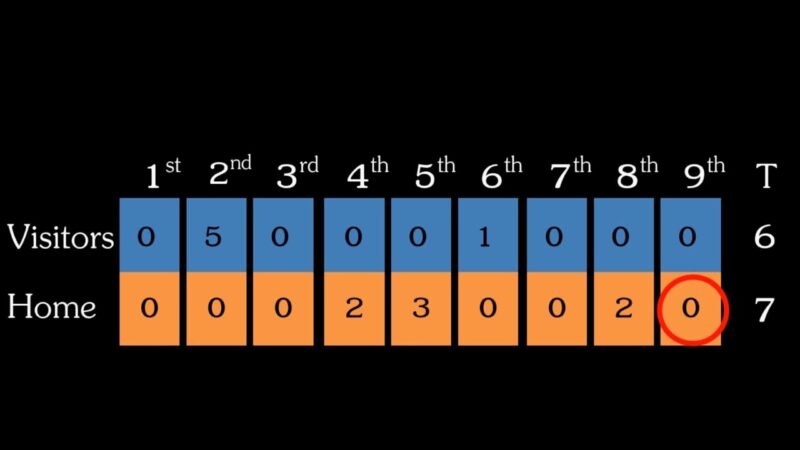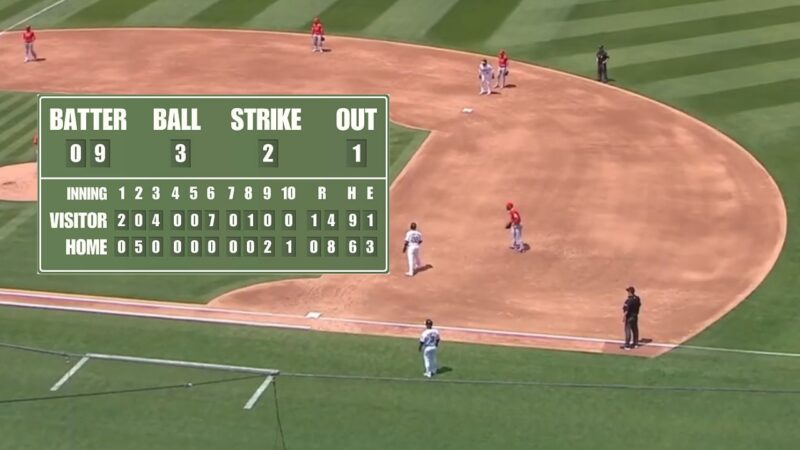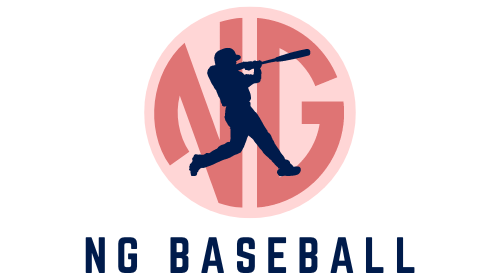The thrill of a baseball game! The crack of the bat, the roar of the crowd, and the ever-present scoreboard, keep fans in the loop. Understanding a baseball scoreboard is akin to reading a book. It tells the story of the game, moment by moment, play by play.
The scoreboard is the heartbeat of the game. It provides a snapshot of the action, letting you know which team is in the lead, how the players are performing, and what’s coming up next. It’s the quickest way to get a grasp of the game’s dynamics without having to ask the person next to you, “Hey, what just happened?”
The main elements include the team names, inning-by-inning summary, and the all-important runs, hits, and errors. Did you know that the first baseball scoreboards were manually operated and didn’t have the fancy digital displays we see today?
The Basics
Layout and Components
- Main Display: This is the heart of the scoreboard. It shows the current score, the number of outs, and which bases are occupied. Think of it as the game’s dashboard.
- Inning-by-Inning Summary: This section breaks down the game inning by inning, showing how many runs were scored in each. It’s a great way to see how the game has progressed.
- Team Names and Logos: Pretty self-explanatory, but it’s always good to know who’s playing, especially if you’re rooting for one of the teams!
Terminology
- Innings: Baseball games are divided into innings, and each inning has two halves: the top (when the away team bats) and the bottom (when the home team bats).
- Runs: The lifeblood of the game. Runs are scored when a player successfully makes it around all the bases and back to home plate.
- Hits: This indicates how many times a team has successfully hit the ball into play.
- Errors: Nobody’s perfect! Errors are mistakes made by the fielding team that allow the batting team to advance.
- Outs: Three outs, and the half-inning is over. Keep an eye on this, as it can change the game’s momentum.
- Pitch Count: This keeps track of how many pitches the current pitcher has thrown.
Navigation
- Switching Between Home and Away Teams: Most scoreboards will display stats for both teams, but some might require a bit of toggling.
- Accessing Additional Game Statistics: Modern scoreboards often come with additional features that let fans dig deeper into player stats and game analytics.
Inning Details

Understanding Inning Information
- Top and Bottom of the Inning: As mentioned earlier, each inning is split into two. The top is when the away team bats and the bottom is the home team’s turn.
- Inning Number: This tells you which inning it is. A standard game has nine innings, but if it’s tied, they might play extra!
Runs and Hits per Inning
- Tracking Team Performance Inning by Inning: This gives a clear picture of which team dominated each inning. It’s like watching the ebb and flow of a tide.
Pitch Count and Pitch Speed
- Monitoring Pitcher Stamina and Performance: A pitcher’s effectiveness can wane as the game progresses. Keeping an eye on their pitch count can give insights into their current form.
- Noting the Velocity of Pitches: Speed isn’t everything, but a fastball can reach speeds of up to 100 mph! It’s always thrilling to see a pitcher throw a blazing-fast pitch and the batter’s reaction to it.
Team Statistics
Ah, the nitty-gritty details! Team statistics are where the rubber meets the road. It’s the data that gives depth to the story of the game, showcasing individual and collective performances.
Team Scores
- Keeping Tabs on the Current Score: This is the most glaring number on the scoreboard. It’s the immediate answer to the burning question: “Who’s winning?” The team with the higher number, of course! But remember, in baseball, the game isn’t over until the last out.
- Identifying Which Team is Winning: Beyond just the numbers, the scoreboard often uses color codes or highlights to emphasize the leading team. It’s a quick visual cue for those moments when you’re returning from a snack break and need to catch up.
Hits and Errors
- Analyzing Offensive and Defensive Performance: Hits give you a sense of a team’s offensive prowess, while errors can be a window into their defensive challenges. A team with many hits is having a good day at the plate, but a team with multiple errors might be struggling in the field.
Pitching Stats
- Pitcher’s Performance Data: This dives into the specifics of how the pitcher is doing. It includes the number of strikes, balls, and the aforementioned pitch count.
- Strikeouts, Walks, and Earned Runs: Strikeouts indicate the pitcher’s dominance, while walks can show a bit of struggle in their control. Earned runs give insight into how many runs the pitcher has allowed that wasn’t due to fielding errors.
Notable Player Stats
- Highlighting Standout Players: Every game has its heroes and sometimes, its villains. The scoreboard often shines a light on players who are having an exceptional game, be it with home runs, stolen bases, or game-changing plays.
Game Progression
The beauty of baseball is its unpredictability. One moment, it’s a slow-paced game, and the next, it’s full of heart-stopping action. Understanding game progression helps fans anticipate those edge-of-the-seat moments.
Tracking the Number of Outs
- How Outs Affect the Game: Three outs and the teams switch roles. But the importance of each out can’t be understated. The difference between no outs and two outs is massive in terms of strategy and pressure.
Monitoring the Inning and Pitch Count
- Recognizing Pivotal Moments in the Game: As the innings progress and the pitch count rises, the stakes get higher. Late innings with a close score can be nail-biting, especially if a star player steps up to the plate or a relief pitcher is called in.
Assessing Momentum Shifts
- Identifying Turning Points and Exciting Plays: Baseball is a game of moments. A home run, a spectacular catch, or even a strategic bunt can shift the momentum. The crowd’s reaction, combined with the changing stats on the scoreboard, can signal these pivotal moments.
Advanced Features

Modern baseball isn’t just about the basics. With technology’s integration, today’s scoreboards offer a plethora of features that enrich the fan experience.
Player Profiles
- Accessing Detailed Player Information: Ever wondered about a player’s career stats or achievements? Advanced scoreboards often have features that allow fans to access detailed player profiles, offering insights into their journey and accomplishments.
Video Highlights and Replays
- Enhancing the Fan Experience: There’s nothing like reliving that amazing catch or the game-winning home run. Modern scoreboards come equipped with large screens that showcase video highlights and crucial replays, ensuring fans don’t miss out on any of the action.
Historical Data and Records
- Exploring the Team’s and Players’ History: For the true baseball aficionados, delving into historical data can be a treat. Whether it’s revisiting a team’s golden era or reminiscing about legendary players, advanced scoreboards serve as a bridge to baseball’s rich history.
FAQ

Why is it important to understand the different components of a baseball scoreboard?
Understanding the components of a baseball scoreboard allows fans to follow the game’s progression, anticipate strategic moves, and appreciate the nuances of individual and team performances. It enhances the overall viewing experience, making each game more engaging and immersive.
Are modern scoreboards only digital, or do manual scoreboards still exist?
While many modern stadiums have adopted digital scoreboards due to their versatility and ability to display dynamic content, manual scoreboards still exist, especially in historic ballparks. These manual scoreboards offer a nostalgic touch and are operated by hand, adding a unique charm to the game.
How do advanced scoreboard features differ from the basic ones?
Basic scoreboard features primarily focus on the ongoing game’s statistics, such as runs, hits, errors, and innings. Advanced features, on the other hand, delve into detailed player profiles, video replays, historical data, and other enriched content that provides a deeper understanding and appreciation of the game and its players.
Can I access the same scoreboard information when watching a game on TV or online?
Yes, when watching a game on TV or online, broadcasters typically display a condensed version of the scoreboard, highlighting essential stats. Many broadcasting services also offer additional features, allowing viewers to access detailed statistics, player profiles, and other relevant information.
Final Words
Baseball is more than just a sport; it’s a narrative, a dance of strategy, skill, and sometimes, sheer luck. The scoreboard, with its numbers and symbols, is the storyteller. By understanding its language, you become more than a passive observer; you become a part of the game’s unfolding story.
The thrill of a close match, the anticipation of a potential home run, or the strategy behind a pitcher change – all these nuances become clearer with a grasp of the scoreboard. And as you sit in the stands, armed with this knowledge, you’ll find that your appreciation for the game deepens, your cheers become louder, and your experience, is all the more enriching.
So, the next time you’re at a ballpark, let the scoreboard guide you through the game’s highs and lows and savor every moment. After all, baseball is a game best enjoyed with heart, soul, and a bit of number crunching!







